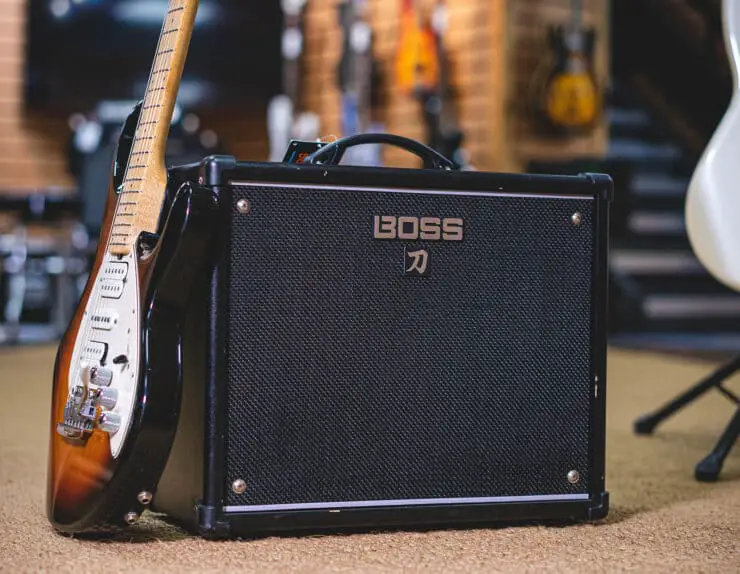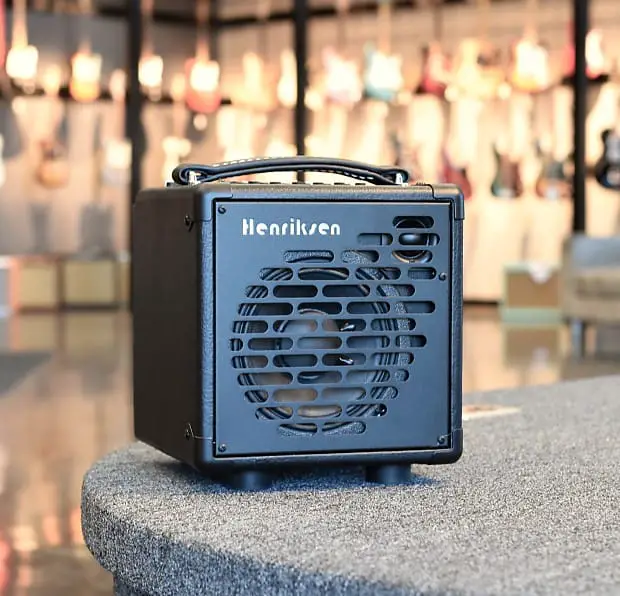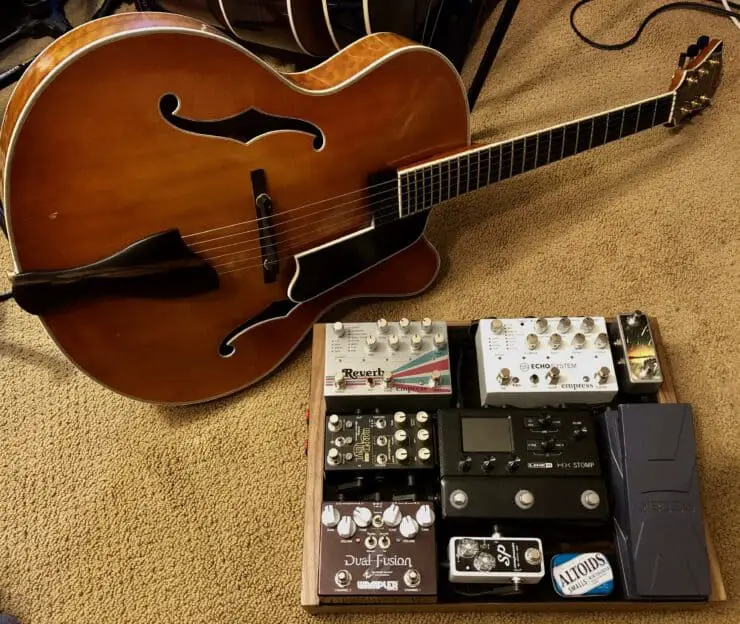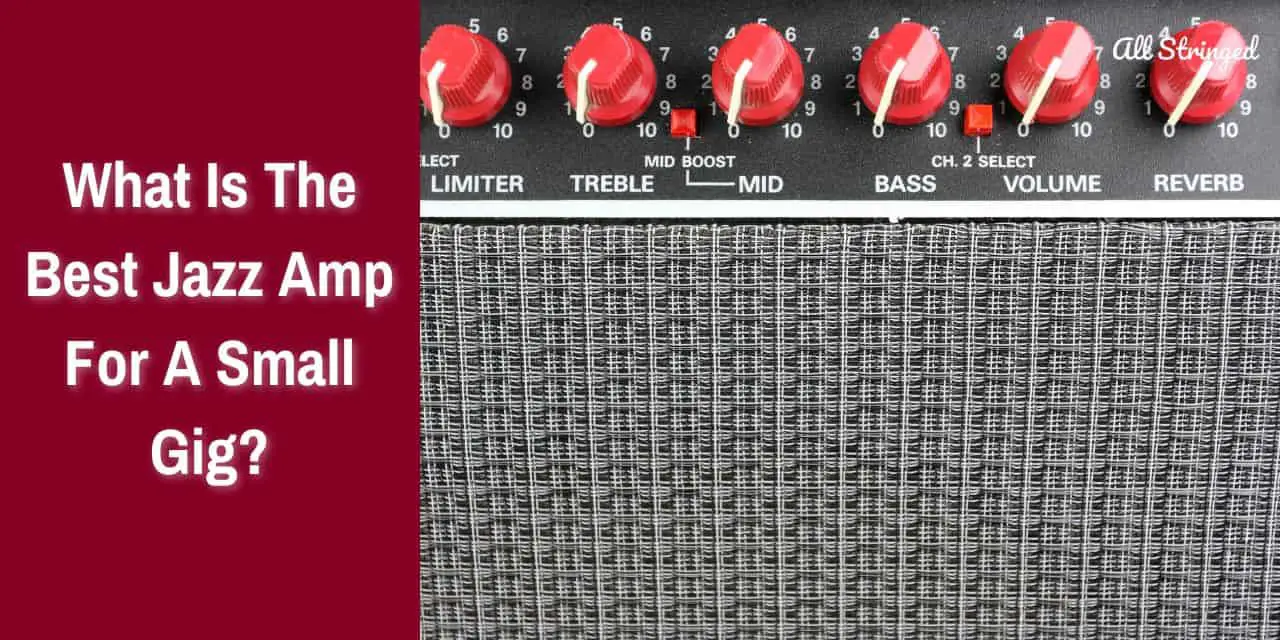Jazz is an exciting and lively genre of music that has been performed in venues all around the world. If you are a guitar player looking to make your jazz sound stand out in a small gig, having the right amp is essential. In this article, we’ll explore what the best jazz amp is for a small gig and how it can help make your sound stand out. Whether you’re a beginner or a seasoned musician, you’ll be sure to find something that fits your needs. So, if you’re looking for an amp that will provide you with the perfect sound for your small gig, read on!
What is the best jazz amp for a small gig?
When it comes to jazz music, the right amp can make the difference in capturing the intricate nuances and soulful melodies that define the genre. Whether you are performing in a cozy jazz club or a small intimate venue, having an amp capable of delivering warmth, clarity, and articulation will be important. Now, you might wonder what is the best jazz amp for a small gig. The answer is, there is not one particular answer to this question. The ideal amp option for you will depend on factors like the type of venue you’re playing in, the type of sound you’re looking for, the size of the room, the size of the band, and more.
However, there are certain jazz amp options that are quite popular among jazz musicians and guitarists. Here are some of the best jazz amps for small gigs, offering a blend of power, tone, and portability to help you create a captivating musical experience.
>>> Click here to read our review about the Top 15 Best Jazz Amps <<<
#1. Roland JC-40 Jazz Chorus
The Roland JC-40 Jazz Chorus is a legendary amp known for its exceptional clean tone and versatility. With dual 10-inch speakers, this jazz amp offers a lush stereo sound that is perfect for jazz. Its signature chorus effect adds a subtle spatial dimension to your playing, enhancing the depth of your sound without overwhelming it. With 40 watts of power, the Roland JC-40 Jazz Corus amp is ideal for small gigs, delivering a clear and balanced sound that is well-suited for both clean and slightly driven jazz tones.
Here are the pros of using Roland JC-40 Jazz Chorus for small gigs –
Signature clean tone
The Roland JC-40 Jazz Chorus is celebrated for its pristine clean tone. With a solid-state design, it offers exceptional clarity and articulation, allowing every note and chord to ring out with precision. This characteristic is important for jazz guitarists who are looking to convey the subtleties of their playing style.
Stereo chorus effects
The built-in stereo chorus effect is one of the defining features of the Ronald JC-40 Jazz Chorus. It adds a rich and spacious dimension to your sound without overwhelming it. This effect is especially well-suited for jazz as it creates a sense of depth and ambiance that complements the genre’s nuanced melodies.

Versatility
While the Roland JC-40 Jazz Chorus is often associated with jazz, its versatility extends beyond the genre. Its clean platform makes it a great canvas for pedals, allowing you to experiment with different effects to shape your sound according to your musical preferences.
Power and projection
With 40 watts of power, the Roland JC-40 is more than capable of handling small gigs and venues. It offers ample volume and projection without sacrificing clarity, making it an ideal option for intimate performances.
Reliability and build quality
Roland is known best for its robust build quality and the Roland JC-40 is no exception. This amp is built to withstand the rigors of the road, ensuring that it remains a dependable companion for your musical endeavor.
Here are the cons of using Roland JC-40 Jazz Chorus for small gigs –
Lack of distortion
While the Roland JC-40 Jazz Chorus excels at clean tones and pedal-friendly platforms, it might fall short in delivering distorted or overdriven sounds that are often desired for specific jazz subgenres or creative experimentation.
Weight
While not excessively heavy, this jazz amp may be considered a bit heavier than some other compact jazz amps. This can impact portability, especially for musicians who frequently move their gear.
#2. Fender Deluxe Reverb
The Fender Deluxe Reverb is a classic jazz amp that has found its place in the hearts of many jazz musicians and guitarists. With 22 watts of power and a single 12-inch speaker, the Fender Deluxe Reverb offers a warm and dynamic tone that is perfect for small gigs. Its reverb and tremolo effects add a touch of vintage charm to your sound, creating a nostalgic atmosphere that complements jazz music beautifully.
Here are the pros of using Fender Deluxe Reverb for small gigs –
Warm and articulate clean tone
The Fender Deluxe Reverb is known for its classic and warm clean tone. Its tube-driven circuitry is capable of producing a rich and harmonic sound that is well-suited for capturing the subtleties of jazz guitar playing. The clean platform allows your chords and melodies to ring out with clarity and expressiveness.
Vintage Reverb and Tremolo
The built-in reverb and tremolo effects are signature features of the Fender Deluxe Reverb. The reverb effect will add a lush sense of space to your sound, enhancing the ambiance of your playing. Meanwhile, the tremolo effect will provide a subtle and rhythmic modulation that can add a touch of nostalgia to your jazz performances.
Portable and lightweight
The Fender Deluxe Reverb’s compact size and manageable weight make it a practical option for small gigs and venues. It is quite easy to transport and set up, allowing you to focus on your music without the hassle of heavy equipment.
Power and projection
With 22 watts of power and a single 12-inch speaker, the Fender Deluxe Reverb offers a balanced blend of volume and projection that is suitable for small venues. It offers enough headroom to handle dynamic jazz playing without compromising clarity.

Classic aesthetic
The Fender Deluxe Reverb’s vintage design and timeless appearance add a touch of elegance to any stage. Its iconic black faceplate, silver grille cloth, and drip edge control panel evoke a sense of nostalgia that resonates with both the guitarists and audiences.
Here are the cons of using Fender Deluxe Reverb for small gigs –
Limited distortion
The Fender Deluxe Reverb is primarily known for its clean tones. While it is capable of producing a mild overdrive when pushed, it might not be the best option if you require heavier distortion for jazz subgenres or experimental sounds.
Single channel
The Fender Deluxe Reverb features a single channel with shared EQ controls. While simplicity can be an advantage for dialing in your sound quickly, some musicians and guitarists might miss the option of switching between multiple channels with different settings.
#3. Henriksen The Bud
If you are looking for a compact and lightweight amp that does not compromise on quality, Henriksen The Bud is an amazing choice. This solid-state jazz amp offers 120 watts of power through a single 6.5-inch speaker, delivering a clear and transparent tone that is well-suited for jazz. This jazz amp’s simplicity and portability make it ideal for small gigs and its tonal versatility ensures that your laying shines through with clarity and precision.
Here are the pros of using Henriksen The Bud for small gigs –
Exceptional portability
The Bud’s compact size and lightweight design make it a dream come true for musicians and guitarists on the move. It is an ideal companion for musicians and guitarists who prioritize convenience without sacrificing sound quality.
Solid-state reliability
Henriksen is known for its high-quality solid-state amps and The Bud is no exception. With no tubes to worry about, you will be able to count on consistent performance without the need for frequent maintenance or tube replacements.
Powerful performance
Despite its small size, Henriksen The Bud delivers an impressive 120 watts of power. This power output will ensure that you’ll have ample volume and projection for small gigs and venues while maintaining the clarity and warmth that jazz demands.
Transparent clean tone
The Bud is designed to reproduce your guitar’s natural tone with exceptional accuracy. Its transparent clean sound allows your playing nuances to shine through, making it a great choice for jazz musicians and guitarists who value clarity and articulation.

Versatile connectivity
Henriksen The Bud is an amp that offers a variety of connectivity options, including an XLR input, an auxiliary input, and direct outputs. This versatility will allow you to use the jazz amp for both your instrument and vocals, making it a great option for solo performers.
Here are the cons of using Henriksen The Bud for small gigs –
Limited tone shaping
While The Bud does offer a clean and transparent tone, its tone-shaping options are rather simple. The lack of extensive EQ controls or built-in effects might limit your ability to fine-tune your sound to specific jazz subgenres or artistic experimentation.
Single-channel design
The Bud features a single-channel design with minimal controls. While this design simplifies operation, some guitarists and musicians may miss the flexibility of switching between multiple channels with distinct settings.
#4. DV Mark Little Jazz
The DV Mark Little Jazz is designed specifically with jazz guitarists in mind. With 50 watts of power and an 8-inch speaker, this jazz amp provides a warm and articulate sound that is perfect for small venues. Its simplicity and straightforward controls make it easy to dial in your desired tone. Meanwhile, its compact size will ensure that you can carry it to gigs with ease.
Here are the pros of using DV Mark Little Jazz for small gigs –
Portability and compact design
The DV Mark Little Jazz lives up to its name as it offers exceptional portability. Its compact size and lightweight construction make it a breeze to carry to gigs and rehearsals, ensuring that you’re able to focus on your music without the hassle of heavy equipment.
Warm and articulate tone
The DV Mark Little Jazz’s clean tone is characterized by its warmth and clarity, making it an excellent option for capturing the nuances of jazz guitar playing. Its tube-driven design imparts a rich harmonic quality to your sound, allowing your chords and melodies to resonate with expressiveness.
Built-in reverb and tone controls
The inclusion of built-in reverb is a notable benefit of the DV Mark Little Jazz. The reverb effect adds depth and ambiance to your sound, enhancing the overall atmosphere of your performance. Moreover, the amp’s simple but effective tone controls allow you to shape the tone to suit your playing style and preferences.
Power output
Despite its small size, the DV Mark Little Jazz features a remarkable output of 50 watts. This power ensures that you have enough volume and projection to fill small venues and intimate performance spaces without compromising on tonal quality.
Effective for various genres
While the DV Mark Little Jazz is known for its jazz-friendly tones, its versatility extends beyond the genre. It is able to handle a variety of musical styles, making it a flexible choice for musicians and guitarists who explore diverse sonic landscapes.
Here are the cons of using DV Mark Little Jazz for small gigs –
Single channel
The DV Mark Little Jazz features a single-channel design, which means that you will need to rely on external pedals if you desire a range of tonal options. This simplicity can be highly advantageous for musicians or guitarists looking for straightforward operation but some might miss the convenience of multiple channels.
Limited distorted options
The DV Mark Little Jazz is designed primarily for clean and slightly overdriven tones. Musicians and guitarists looking for heavy distortion or extensive overdrive options for specific jazz subgenres or experimental sounds may find this amp somewhat limiting in this regard.
#5. Polytone Mini-Brute III
The Polytone Mini-Brute III is a classic jazz amp known best for its clean and pure tone. With its 15-inch speaker and 60 watts of power, this amp delivers a balanced and full-bodied sound that is perfect for jazz guitar and other instruments. Its straightforward controls will allow you to achieve a wide range of jazz tones, from warm and mellow to bright and articulate.
Here are the pros of using Polytone Mini-Brute III for small gigs –
Signature vintage tone
The Polytone Mini-Brute III is celebrated for its iconic vintage jazz tone. Its tube-driven circuitry imparts a warm, round, and rich sound that is synonymous with classic jazz guitar playing. This tonal quality resonates particularly well with jazz enthusiasts looking to recreate the timeless jazz sound.
Single-channel simplicity
The Polytone Mini-Brute III’s single-channel design embodies simplicity, allowing you to focus on your playing without the distraction of multiple controls. This streamlined approach is advantageous for players looking for straightforward operation and quick adjustments.
Balanced and full-range sound
With a 15-inch speaker and 60 watts of power, the Mini-Brute III delivers a balanced and full-range sound that is well-suited for jazz performances. Its ample headroom will ensure that your playing retains clarity and expressiveness, even at higher volumes.
Ideal for chord melodies
The warm and articulate clean tone of the Polytone Mini-Brute III is especially well-suited for chord melody playing, which is a hallmark of jazz guitar. It allows intricate chord voicings to shine through with warmth and clarity, making your melodies come to life.
Vintage aesthetic
The Mini-Brute III’s classic appearance, featuring a silver grille cloth and vintage-style control knobs, adds a touch of nostalgia and authenticity to your stage setup, enhancing the visual experience of your performances.
Here are the cons of using Polytone Mini-Brute III for small gigs –
Limited versatility
While the Polytone Mini-Brute III excels at producing vintage jazz tones, it might be less versatile compared to some other amps. Musicians and guitarists looking for a wide range of tones, effects, or the ability to experiment with different genres may find its tonal palette somewhat limited.
Lack of modern features
The Polytone Mini-Brute III lacks some of the modern features found in contemporary amplifiers, such as built-in effects, multiple channels, and advanced EQ controls. This simplicity could be appealing to guitarists looking for a vintage sound but less appealing to guitarists who desire modern conveniences.
Factors to consider when choosing a jazz amp
Selecting the right jazz amp for playing jazz is a critical decision that can greatly impact your sound and overall performance. Jazz music demands a unique blend of clarity, warmth, and tonal intricacies, making the choice of amp much more important. Here are some of the important factors you must consider when choosing a jazz amp to help you find the perfect harmony for your musical expression.
#1. Power rating
The power rating of an amp dictates how loud and clear the sound will be. For jazz, where subtlety and nuance are important, a moderate power rating is often preferred.
A lower-wattage jazz amp will allow you to achieve a rich, warm tone at lower volumes, which is ideal for intimate jazz settings. A 15-30 watt amp can be suitable for most jazz performances, allowing you to maintain clarity without overpowering the venue.
#2. Effects
While many jazz purists typically favor a straightforward and unembellished sound, some effects can enhance your jazz performance when used tastefully. Built-in reverb, for instance, can add depth and ambiance to your playing without overwhelming the natural dynamics of your sound.
Chorus and delay effects can also be employed sparingly to create ethereal textures or simulate the characteristics of a larger performance space.
#3. Tone controls
Tone controls play a key role in tailoring your sound to fit the nuances of jazz music. You should look for an amp with responsive EQ knobs that allow you to adjust bass, midrange, and treble frequencies.
Jazz guitarists often prefer amps with a transparent EQ that enhances the natural characteristics of their instrument without coloration. This allows you to sculpt your tone precisely and achieve the warm, clear sound that jazz demands.
#4. Speaker size
The size of the speaker in your jazz amp influences the tone and projection of your sound. Generally, larger speakers tend to produce a more rounded and resonant sound, which is ideal for capturing the depth of jazz chords and intricate melodies.
A 10-inch or 12-inch speaker is often favored for jazz as it strikes a balance between warmth and articulation, ensuring your playing nuances shine through.
#5. Connectivity
Modern jazz musicians and guitarists often incorporate electronic instruments and devices into their setups. You must consider a jazz amp with versatile connectivity options, such as an effects loop, direct recording outputs, and headphone jacks. These features will allow you to integrate pedals, recording equipment, and practice headphones seamlessly, ensuring your jazz amp is a versatile hub for your musical creativity.
FAQs
What features should I look for when choosing a jazz amp for a small gig?
When choosing a jazz amp for a small gig, it’s important to consider features such as power, speaker size, tone control, portability, and your budget. A good jazz amp should have enough power to fill a small venue, a speaker size that is appropriate for the size of the room, tone control to shape your sound, and portability for easy transport. Additionally, it’s important to find an amp that fits your budget.
What is the difference between a tube amp and a solid state amp for a jazz gig?
Tube amps are known for their warm, rich sound and responsive nature, making them ideal for jazz gigs. They also have the ability to produce classic amp tones and can be overdriven for a more distorted sound. Solid state amps, on the other hand, are known for their affordability, durability, and reliability. They are often more versatile than tube amps and offer a range of tones and effects.
What should I consider when choosing an amp for a small jazz gig?
When choosing an amp for a small jazz gig, you should consider the type of venue, the size of the room, the size of your band, the type of sound you’re looking to play. Remembering these factors will help you choose the ideal jazz amp for a small gig.



